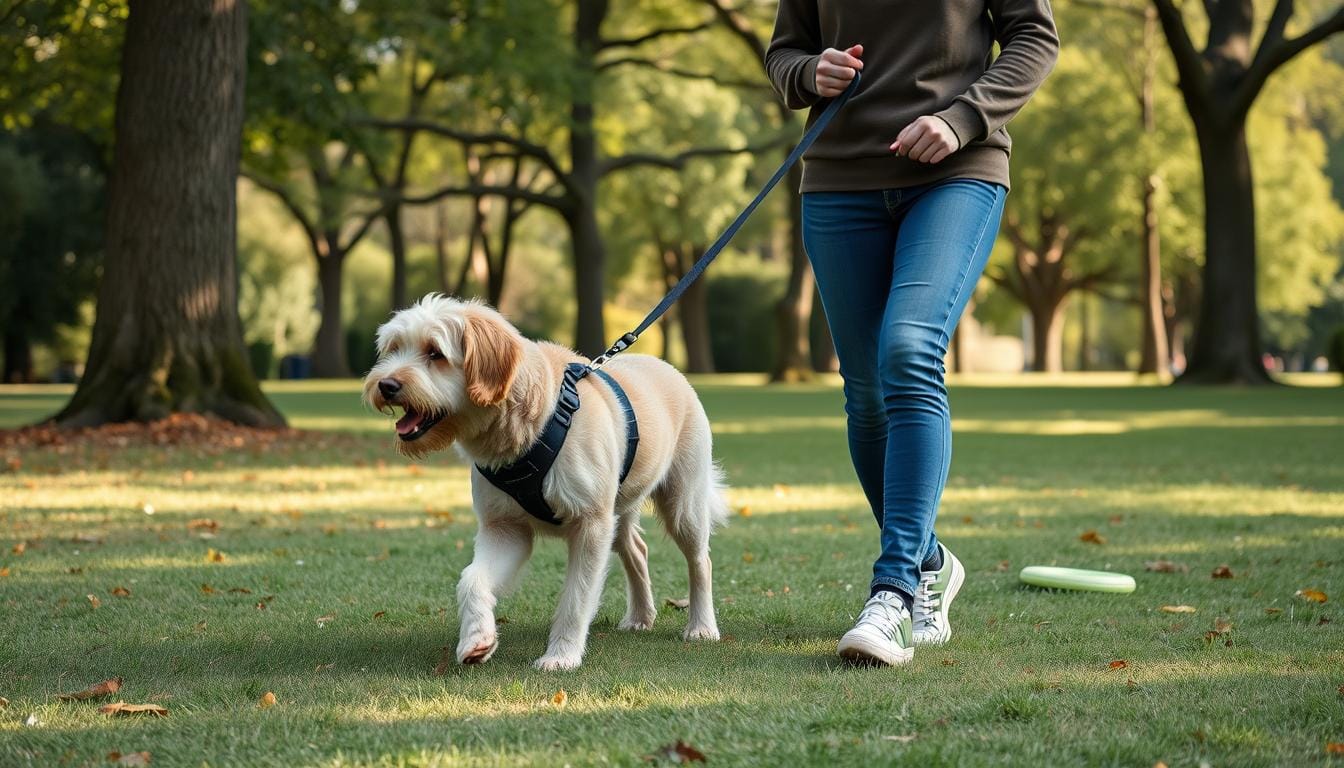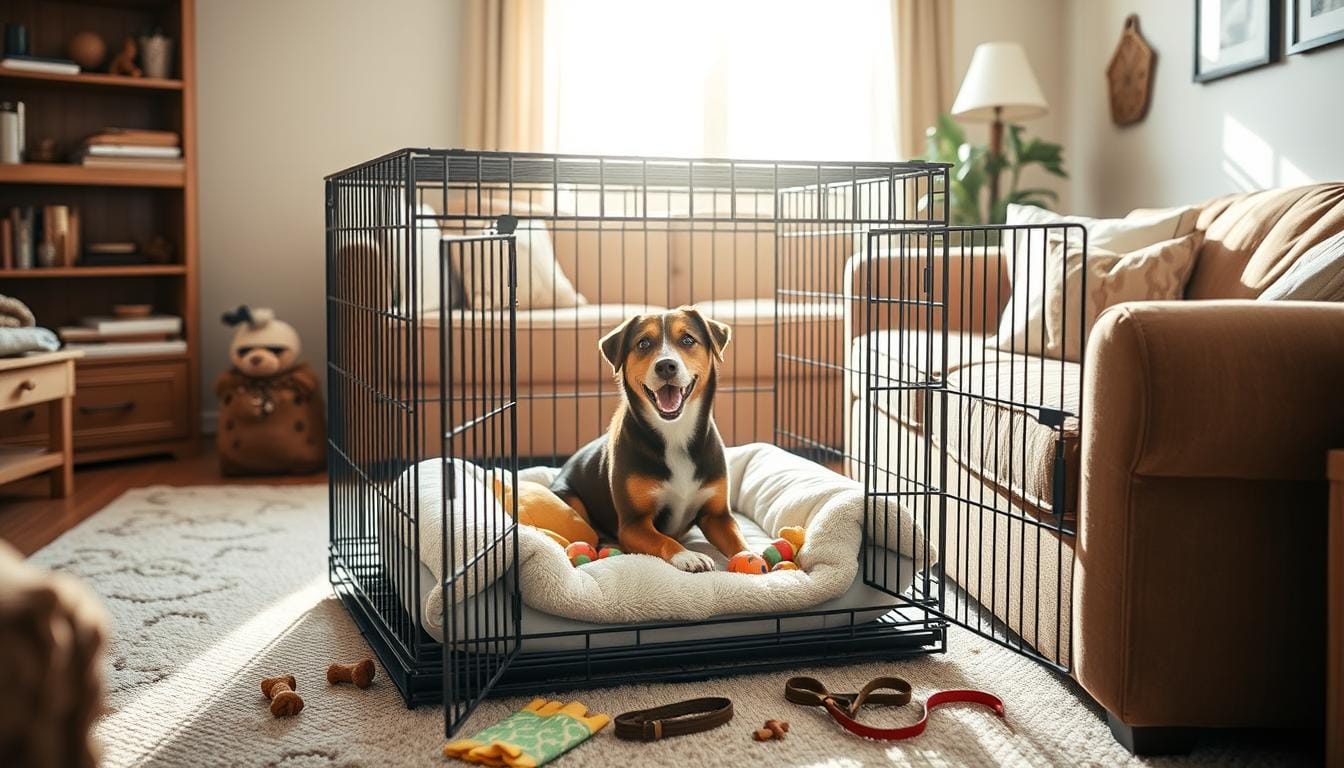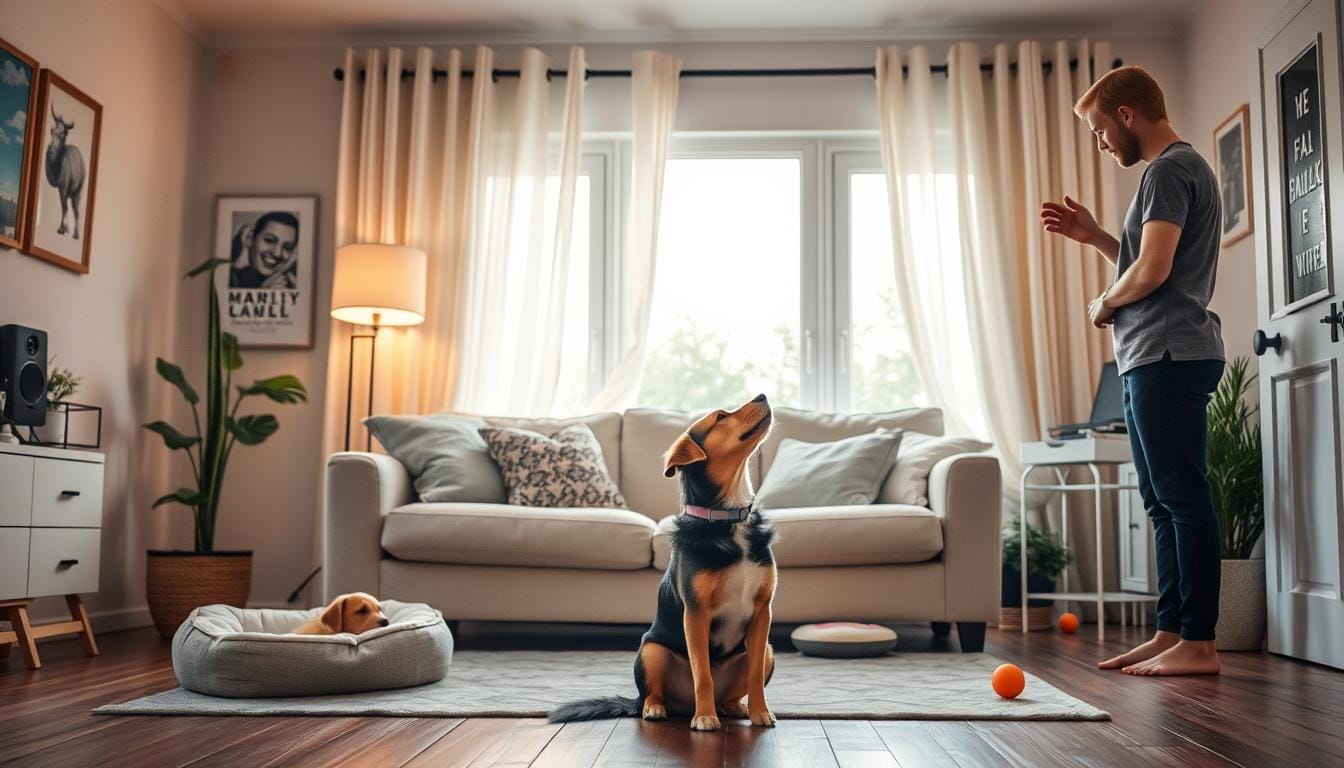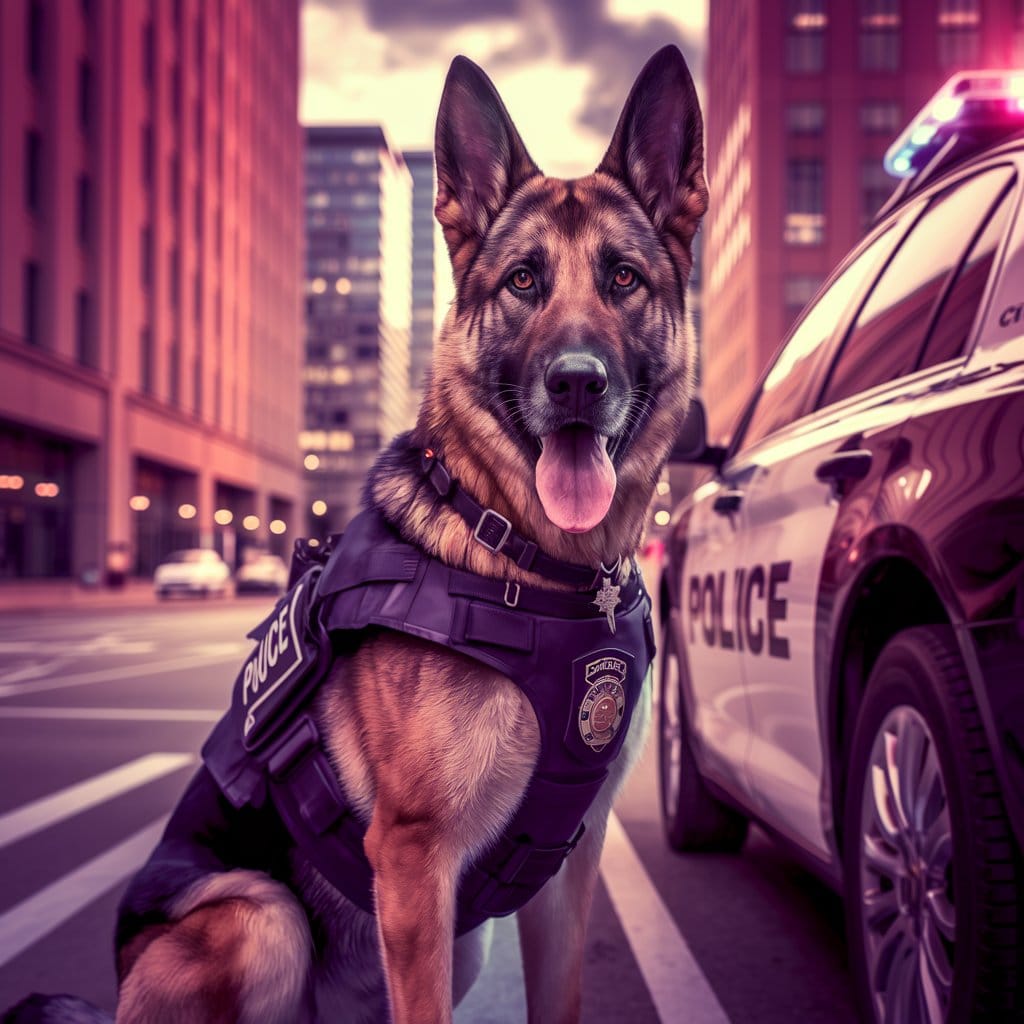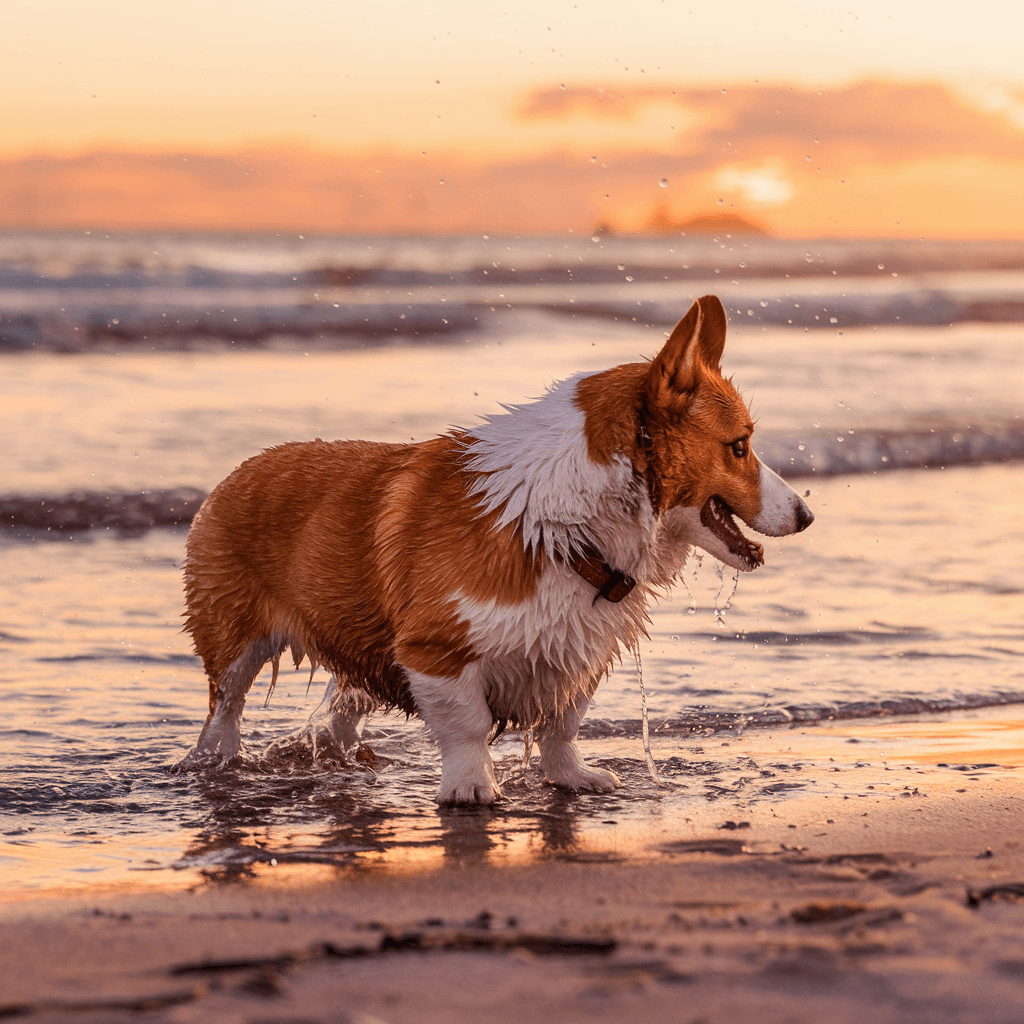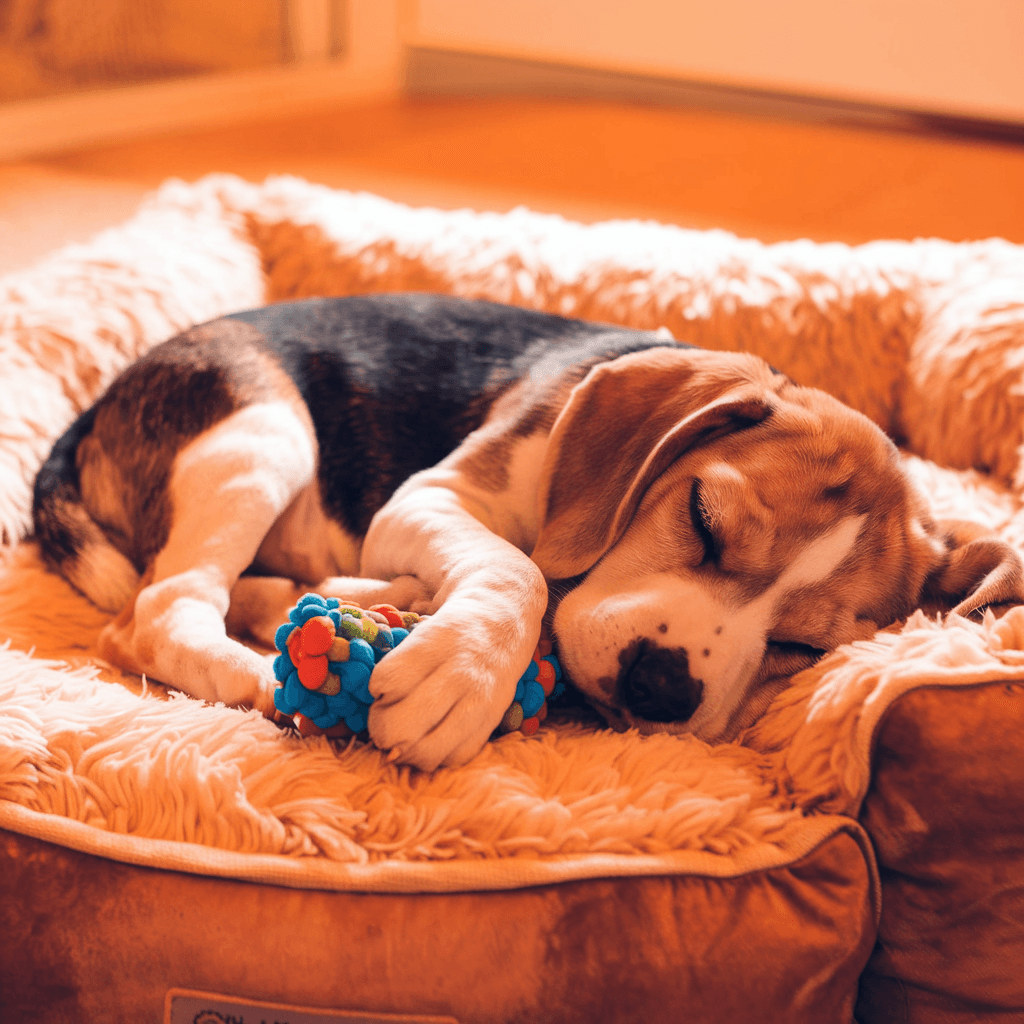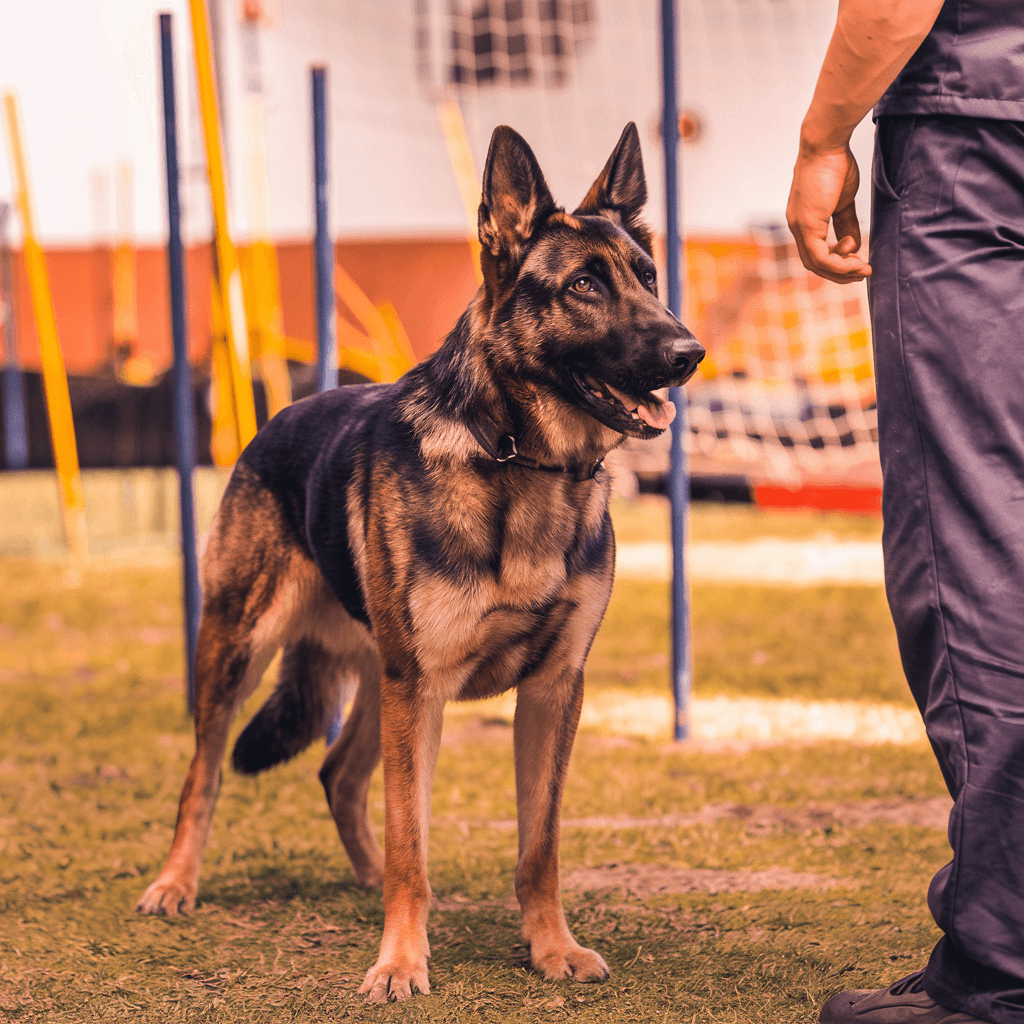Bringing a new puppy home is exciting, but it can be tricky when you already have an older dog. We’re here to help you navigate this delicate process of pet introductions. By understanding dog behavior and focusing on puppy socialization, you can create a harmonious household for all your furry friends.
Canine development experts suggest that about 70-80% of older dogs can adapt well to younger puppies. This statistic is encouraging, but it’s crucial to approach the introduction carefully. Let’s explore five key tips to ensure a smooth transition for your new pup and your seasoned canine companion.
Remember, patience is key. About 85% of older dogs accept new puppies more easily when they discover the pup already inside the house during their first meeting. This approach can help reduce territorial feelings, which are often the root of aggression in 60% of introduction cases.
Key Takeaways
- Proper introductions are vital for successful puppy-older dog relationships
- Understanding canine body language helps prevent conflicts
- Creating separate spaces for each dog reduces territorial disputes
- Consistent supervision is crucial during initial interactions
- Positive reinforcement aids in building a harmonious multi-dog household
Understanding Your Older Dog’s Readiness
Before bringing a new puppy home, we need to check if our older dog is ready. This means looking at different parts of their life and behavior. Let’s explore the important factors for a good introduction.
Assessing Your Dog’s Temperament
Dog psychology is key in knowing if an older dog will get along with a new puppy. We should think about their personality, energy, and how they feel about their space. Some adult dogs might need more social time, showing signs like:
- Fearful or aggressive behavior around others
- Nervousness during walks
- Shyness or overexcitement
Physical Health Considerations
It’s important to make sure our older dog is healthy before introducing a new puppy. Regular vet visits and keeping vaccinations up to date are crucial. Senior dogs might have joint pain, which could make it hard for them to play with a puppy. Here are some health points to consider:
| Age Group | Health Considerations | Recommended Actions |
|---|---|---|
| Adult Dogs | Regular physical activity needs | Maintain exercise routines |
| Senior Dogs | Joint pain, age-related changes | Joint supplements, frequent vet visits |
Previous Social Experience
Our dog’s past with other dogs can affect how they’ll do with a new one. If they missed the best time for socializing (seven weeks to four months), they might struggle. But, socializing an adult dog can really help:
- Improved happiness and comfort
- Easier integration of new pets
- Potential for long-lasting bonds
By looking at these points, we can get our older dog ready for a new puppy. This helps avoid problems and helps them both grow together.
Pre-Introduction Preparations
Getting ready for pet bonding between your new puppy and older dogs needs careful planning. We’ve gathered essential steps for a smooth introduction process.

First, puppy-proof your home. Remove hazards and create separate spaces for each dog. This stops resource guarding and lets both pets have their own safe zones. Introduce the puppy’s scent before meeting to help your older dog get used to the newcomer.
Get separate items for your new puppy:
- Beds
- Toys
- Feeding stations
Think about breed compatibility and energy levels when picking a puppy. Keep your older dog’s routine the same and reassure them during the process. This helps with animal introductions and lowers stress.
“Proper preparation is key to successful pet introductions. It sets the foundation for a harmonious relationship between your furry family members.”
Effective dog training is vital for a new addition. Short, frequent sessions work better than long ones. Aim for two to three 1-3 minute training sessions daily with your existing dog to reinforce good behavior.
| Aspect | Statistics |
|---|---|
| Training Success Rate | 95% at Sit Now Stay Dog Training |
| Behavioral Issues Addressed | 80% of dogs exhibit issues upon new pet introduction |
| Introduction Process Duration | 2-3 weeks average acclimation time |
| Positive Reinforcement Impact | 70% improvement in pet interactions |
By following these steps, you’re preparing for successful pet bonding and a harmonious multi-dog household.
Creating Separate Spaces in Your Home
Setting up different areas for each dog is crucial for pet introductions. This method prevents fights and gives each dog a place to hide. Here are some dog socialization techniques to help your multi-dog home be peaceful.
Setting Up Individual Areas
Begin by picking out special sleeping spots for each dog. Use baby gates or crates to mark their areas. This is very helpful when you can’t watch them all the time.
Managing Food and Water Stations
Make sure each dog has their own spot for eating. Place water bowls in different spots to cut down on fights. It might take a few weeks for them to get used to this.
Organizing Personal Items and Toys
Each dog should have their own toys and personal things. This stops them from getting too attached to things and fights over them. Keep these items in their own spots to show them their space is their own.
| Item | Resident Dog | New Dog |
|---|---|---|
| Bed | Living Room | Guest Room |
| Food Bowl | Kitchen | Laundry Room |
| Water Bowl | Patio | Hallway |
| Toys | Toy Basket 1 | Toy Basket 2 |
By following these steps, you’re setting up your dogs for a smooth introduction. Remember, it might take a few weeks for them to fully adjust to their new home.
Puppy socialization, dog behavior, pet introductions
It’s important to understand dog psychology when introducing a puppy to older dogs. We must read their body language and watch for warning signs. This helps us know if both dogs are comfortable and step in if needed.
Reading Canine Body Language
Dogs talk through their body language. Look at their tail, ears, and how they stand. A wagging tail doesn’t always mean they’re happy. Signs like a stiff body or raised hackles can show they’re uncomfortable or upset.
Understanding Warning Signs
Watch out for signs that might lead to trouble:
- Growling or snarling
- Raised fur along the back
- Prolonged staring
- Baring teeth
- Tucked tail
If you see these signs, it’s time to separate the dogs calmly to avoid things getting worse.
Positive Interaction Signals
Look for these signs of good interactions:
- Play bows (front end down, rear end up)
- Relaxed body language
- Gentle tail wagging
- Taking turns during play
Knowing these signs helps make introductions go well. Remember, puppies are most open to socializing before they’re 16 weeks old. Early, positive experiences with other dogs can shape their adult behavior.
| Age | Socialization Stage | Key Activities |
|---|---|---|
| 3-8 weeks | Early socialization | Interact with mother and littermates |
| 8-16 weeks | Critical socialization period | Introduce to new people, places, and vaccinated dogs |
| 16+ weeks | Ongoing socialization | Continue exposure to diverse experiences |
The Neutral Territory Method
Introducing a new puppy to older dogs needs careful planning. The neutral territory method is a good way to do this. It helps avoid territorial behavior and makes introductions positive.
Choose a place where neither dog feels it belongs, like a park. Start by keeping both dogs on leashes, letting them see and smell each other from afar. If they stay calm, slowly bring them closer together.
For safety, use a barrier like a chain-link fence during the first meeting. Once they seem okay, take them for a walk together. This helps them get used to each other before going home.
“Introducing pets on neutral territory ensures a smooth introduction and reduces stress for all involved.”
Here’s a step-by-step guide for using the neutral territory method:
- Choose a neutral location
- Keep dogs on leashes
- Allow visual and scent contact
- Gradually decrease distance
- Use a barrier if needed
- Take a walk together
Remember, patience is key in pet introductions. By following these dog socialization techniques, you’re setting the foundation for a harmonious multi-dog household.
| Dog Ownership Statistics | Percentage |
|---|---|
| Single dog households | 63% |
| Two-dog households | 25% |
| Three or more dog households | 12% |
These statistics show why proper dog socialization is important. Many families may add a second or third dog to their home.
Establishing Daily Routines
Creating a daily routine is key for dog training and growth. We’ll look at managing feeding, exercise, and rest times. This ensures harmony between your puppy and older dog.
Feeding Schedule Management
Good nutrition is vital for your pets’ health and joy. Puppies need three meals a day, while adults eat once or twice. Use separate areas and times for each dog’s meals to avoid fights.
Exercise and Walk Times
Exercise is crucial for all dogs. But, it must match each dog’s needs. Start puppies with short walks and play. As they grow, increase the time and intensity of their activities.

Rest and Play Periods
It’s important to balance activity with rest. Puppies sleep a lot, up to 18 hours a day. Make sure they have a quiet spot for naps. Older dogs might need shorter, more frequent breaks.
| Age Group | Feeding Frequency | Sleep Duration | Exercise Needs |
|---|---|---|---|
| Puppies | 3 times daily | 16-18 hours | Short, gentle sessions |
| Adult Dogs | 1-2 times daily | 12-14 hours | Moderate, consistent exercise |
Setting these routines is the first step to successful dog training and healthy growth. Be patient and consistent as both dogs adjust to their new life together.
Managing Initial Home Encounters
The first time your puppy meets your older dog at home is very important. It’s best to let the puppy explore inside while the older dog stays outside. This lets the puppy get used to the new place without feeling rushed.
Keep a close eye on both dogs during their first meeting. Watch for any signs of stress or aggression. Try to keep these first meetings short and positive. As they get more comfortable, you can let them spend more time together.
Always prioritize safety. Use leashes indoors if it helps you control them better. This step is important to avoid any sudden reactions during these early meetings.
“Improper socialization can lead to behavior problems later in a dog’s life, making behavioral issues the number one cause of death for dogs under 3 years of age.” – American Veterinary Society of Animal Behavior
To help them bond well, make the environment calm. Give treats and praise when they behave well together. This helps them associate each other’s presence with good things.
Be patient, as some dogs adjust slower than others. Regular, supervised time together will help them live peacefully in the same home.
Supervision and Safety Guidelines
When introducing a puppy to older dogs, careful supervision is key. We must watch their behavior closely to ensure a good relationship. This helps our furry friends get along well.
Monitoring Play Sessions
Watching play sessions is very important. Look for signs of friendly play, like relaxed body language and taking turns. If you see tension or aggression, it’s time to step in.
Intervention Techniques
When conflicts happen, we need to act fast. Use a calm but firm voice to change the focus. If needed, use barriers or leashes to keep them apart. Our goal is to keep the atmosphere positive for both dogs.
Emergency Response Plans
Be ready for unexpected situations. Keep your vet’s number handy. Have a plan for quickly separating dogs if a serious fight breaks out. A good plan can prevent small problems from getting bigger.
| Interaction Type | Action Required |
|---|---|
| Friendly play | Continue monitoring |
| Mild tension | Redirect attention |
| Aggressive behavior | Separate immediately |
By following these guidelines, we can make a safe space for our puppy and older dogs. Remember, patience and consistent supervision are crucial for successful introductions. They help foster positive dog behavior.
Building Positive Associations
Pet bonding is key when introducing a puppy to older dogs. Our aim is to make a peaceful relationship between the new dog and the old ones. Let’s look at some dog socialization techniques to build positive bonds.
Begin by doing fun activities with both dogs together. Walks or playtime with their own toys can help them bond. Always praise and reward calm, friendly behavior with treats. This shows them that being together is a good thing.
Slowly increase the time they spend together, always watching them. Give treats when they’re near each other to make it a positive experience. This teaches them that being together means getting rewards.
“Proper socialization helps reduce the likelihood of puppies developing fear-based behavior problems in the future.”
The key socialization time for puppies is between 3 and 14 weeks. It’s best to start by 8 weeks to avoid future problems like aggression or too much barking.
| Age Range | Socialization Focus | Benefits |
|---|---|---|
| 3-14 weeks | Exposure to various experiences | Reduced fear-based behaviors |
| 8-16 weeks | Puppy socials | Safe environment for skill learning |
| 6-14 months | Continued reinforcement | Prevention of regressive behaviors |
By using these pet bonding strategies and dog socialization techniques, we can help our pets become happy, well-adjusted friends.
Training Techniques for Coexistence
Effective dog training and positive reinforcement are crucial for a peaceful home with your puppy and older dogs. We’ll look at some effective methods to help your pets live together well.
Basic Command Reinforcement
Strengthen your dogs’ obedience by reinforcing basic commands. This keeps your home structured. Practice “sit,” “stay,” and “come” with each dog alone and together. This lays a solid foundation for good behavior and respect.
Reward-Based Training Methods
Positive reinforcement is the heart of successful dog training. Use treats, praise, and toys to reward good behavior. When your older dog and puppy act calmly together, praise them right away. This encourages them to keep up the good work and strengthens their bond.
Consistency in Rules
Set clear rules and boundaries for both dogs. Being consistent prevents confusion and sets clear expectations. If jumping on furniture is not allowed, make sure to enforce this rule for both dogs. This fairness helps avoid jealousy and promotes equality in your pack.
Remember, patience is crucial in dog training. It takes time for new habits to form and for your dogs to adjust to each other. With consistent effort and positive reinforcement, your puppy and older dog can live together happily, creating a peaceful multi-dog home.
Conclusion
Introducing a puppy to an older dog needs careful planning and patience. We’ve looked at puppy socialization and pet introductions. It’s key to understand dog behavior.
Research shows puppies need to meet humans early to form bonds. This is why early socialization is so important.
Studies say gentle handling of puppies daily helps their behavior at 8 weeks. Early stimulation makes them more stress-resistant as adults. Puppies need socialization from 3 to 12 weeks, with 14 weeks as the latest.
This time is vital for them to become friendly, confident, and adaptable.
Proper socialization means exposing puppies to different things. Positive reinforcement helps them stay calm and confident. Puppy classes or playcare services are great for learning social skills.
By following these tips and staying consistent, you can create a happy home for all dogs. Remember, each dog is different, and they may need time to adjust. With the right socialization and training, your older dog and new puppy can become great friends, making your family’s life richer for years.







